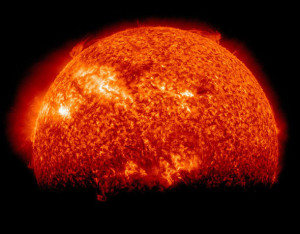Earth closest to sun on January 2

On January 2, 2016, our planet Earth reaches its closest point to the sun for this year at 22:49 Universal Time (5:49 p.m. EST). This is Earth’s perihelion. The word perihelion is from Greek roots peri meaning near, and helios meaning sun.
Earth is closest to the sun every year in early January, when it’s winter for the Northern Hemisphere. We’re farthest away from the sun in early July, during our Northern Hemisphere summer.
Earth is about 5 million kilometers – or 3 million miles – closer to the sun in early January than it is in early July. That’s not a huge change in distance. It’s not enough of a change to cause the seasons on Earth.
This year, on January 2, 2016, the Earth at its closest point swings to within 147,100,176 kilometers (91,403,812 miles) of the sun. That’s in contrast to six months from now, when the Earth reaches aphelion – its most distant point – on July 4, 2016: 152,103,776 km (94,512,904 miles).
Despite what many may think, Earth’s distance from the sun isn’t what causes the seasons. On Earth, because our orbit is so close to being circular, it’s mostly the tilt of our world’s axis that creates winter and summer. In winter, your part of Earth is tilted away from the sun. In summer, your part of Earth is tilted toward the sun. The day of maximum tilt toward or away from the sun is the December or June solstice.